 Facebook
Facebook
 X
X
 Instagram
Instagram
 TikTok
TikTok
 Youtube
Youtube
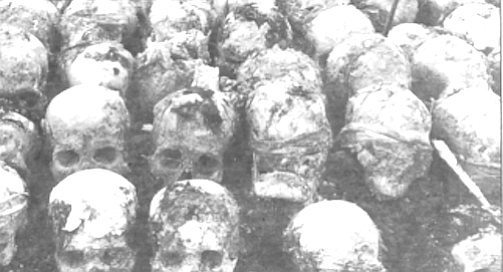
Imagine for a moment: Hitler is found alive and is arrested. That's the kind of shock that went through San Diego's Cambodian community when they heard Pol Pot had been captured. The Khmer Rouge chief, who presided over as many as three million deaths of his own people, is being held in the jungles of northwest Cambodia, according to dissident Khmer Rouge sources. President Clinton has even contemplated sending in a military team and aircraft to spirit Pol Pot to Canada to stand trial for crimes against humanity.
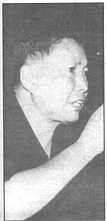
In the hearts of Cambodian refugees everywhere, including 15,000 in San Diego, ghastly memories, hatreds two decades old, are rekindling, burning.
"He should be killed! We want him dead!" says Mr. Sokha, in the Trieu Chau restaurant at University and Menlo in East San Diego. "Don't bother with a trial. Three million people died because of him. Just kill him. We want to know he's gone."
"No!" says Som Rounthe. "We want him brought to trial. O.J. Simpson is known all over the world, and he was only accused of killing two people! We want to know exactly what Pol Pot did. We want the world to know. And exactly why he killed so many - of his own people!"
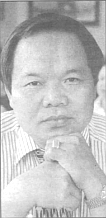
"If we just want to kill him, we're the same as him," says Som Chhoeuth. "He should be put on trial. It would be good to hear him. The Khmer Rouge wasn't just one group. The press simplifies it too much. There were different elements. Some good, some bad."
This conversation takes place in Trieu Chau's back room. As usual in the mornings, a group of Cambodians, mostly men, has gathered to talk and drink cafe k'doc, strong coffee with sweetened condensed milk, and dja fai, deep-fried H-shaped dipping bread. All the men are survivors of the four hellish years, from 1975 to 1979, when famine and tyranny stalked Kambu-ja, the land of the "sons of Kambu."
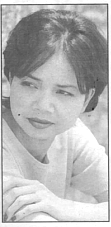
Kathy, the Chinese-Cambodian woman who runs the cash register, stands listening, when she's not giving change.
"My family were all killed by the Khmer Rouge," says Hok So, who was a child back then. He's 26 now. "There were 12 of us. Now there are only 2. I want a trial for Pol Pot, but I would prefer that he were dead."
"Maybe he's not personally responsible," says Cheong, 43, who was a student when he was thrown into a labor camp by the Khmer Rouge because he was "light-skinned, Chinese-Cambodian." "There should be an international trial outside Cambodia, so we are sure he's not killed by anyone who may want to silence him. And for the safety of eyewitnesses. And to be sure of a fair result."
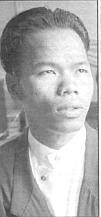
Cheong's mixed feelings about Pol Pot survive despite his treatment by the Khmer Rouge. "There's no doubt the Khmer Rouge love their country. The Cambodian people supported them when they fought the Vietnamese. They were so brave. They didn't want the Cambodian people to disappear, to be colonized by the Vietnamese. Our country has few people but lots of resources. Vietnam is crowded, not much space. They look at us with envious eyes. One thing you know about Pol Pot and the Khmer Rouge: they would never give us away to Vietnam or China."
Mr. Cheong has no kind words for Cambodia's present ruler. Cheong arrived in San Diego as a refugee in the early '80s. His first job was washing dishes. Now he is a businessman. He owns two donut shops. But his passion is investment, to turn Cambodia into one of the "Asian tigers," a success story like Singapore or Taiwan. He's been trying to encourage American investment in Cambodian business projects. "I had a shrimp pond project financed and going in western Cambodia when [prime minister] Hun Sen staged his coup d'etat on July 5. With the fighting and killings, my ponds are ruined. I have lost $50,000. And now Hun Sen has made Cambodia look bad again. It will be hard to find more investors."
For Kathy, no one compares to Pol Pot. "Our neighbors had raised a duck," she says. "Secretly, indoors. When the Khmer Rouge first came, you could still grow your own food and animals. Later they told us, 'You must give all to Angka, the high authority. If you don't, we'll kill you.' But my mom went to the neighbors and said, 'Why should you give your duck to Angka? Kill it and eat it quickly yourselves, before they discover it.' So they killed it that night and ate it. But somehow the authorities knew about the duck. Next day, they took the couple out to the forest and killed them. My mother still feels guilty."
Sleep well my child
We have gone through three fields
The field of death
The field of chains and prisons
And the field of remembrance.
The popular post-Pol Pot Cambodian song comes to mind as I sit on the temple steps with Borin Chhim. We're at the Cambodian Buddhist temple's Saturday morning school on 47th Street. Chhim is 13. I'm curious as to what he knows about Pol Pot.
"Who?" he asks. "My parents only told me there was a civil war in Cambodia. They escaped to get freedom. They tell me I should become a doctor so I can go back and save lives there. I never heard of that man."
Naran, who's ten, hasn't heard of him either. "My parents don't talk about Cambodia," she says. "They came to the U.S. because there were guns, a war."
None of the children I talk to have heard of Pol Pot. "All I've heard about," says Sim Seng, who's 13, "is the trouble my mom and dad had to get here. So I should use my freedom to work hard."
"Same with me," says the girl next to her, Sareth Oum.
"I do teach the children about the three years and eight months and twenty days of the Khmer Rouge regime," says Chhoeub Sre, the 33-year-old principal of the school. "And about the difference between United States and Pol Pot's Kampuchea [Cambodia]. How we, as children, had to spend most of our time out in the rice fields, working from midday to midnight, getting two to three hours' sleep; how if you were sick or weak, they beat you. I want them to know how lucky they are. But parents don't want their children burdened down by too many stories of that old life. They want them to be free to make a future here in their new country, as Americans."
In the temple next door, orange-robed monks sit before a great crowd of people who have brought offerings of food and flowers. Here, in the small school office, a group of teachers huddles around Chhoeub Sre's desk.
"I want to hear Mr. Pol Pot speak at his trial," says Samnang Soksovann. "I want to know why, with all the power he had, he didn't stop it. Was someone behind him, making him do it? The Vietnamese? The Chinese?"
Soksovann - or Vann, as he is called - tells of the depressions that still hit him. He's 27, just old enough to remember horrors he witnessed as a 7-year-old. "In my sleep I always see an older man, maybe 65. They tie a cloth around his eyes, take him 500 feet into the forest. Then they just shoot him. I saw this, and many other things. Children shouldn't see such bad things. Pol Pot should not have allowed it."
Bright red blood which overs towns and plains
Of Kampuchea, our motherland,
Sublime blood of workers and peasants
Sublime blood of revolutionary men and women fighters!
The blood changing into unrelenting hatred
And resolute struggle,
On April 17, under the flag of the revolution,
Free from slavery!
The Khmer Rouge national anthem conveys the psychosis of the guerrilla leaders when they found themselves in total power in Cambodia, the fertile belly of Southeast Asia, on April 17, 1975.
"Although a million lives have been wasted, our Party does not feel sorry," a Vietnamese army newspaper quoted Pol Pot as saying two bloody years later, in August 1977. "Our Party needs to be strong."
Tears well up in Molly Ek's eyes. "I was screaming in the jungle for my mom," she says. "And my mom heard my voice. She came out through the trees. I hadn't seen her for months. But it had taken me all day to find her. The sun was setting. I had to get back before I was missed. I said, 'Mom, it's time to go back already.' She said, 'Can you stay another hour?' I said, 'No! They will discover I am gone.' "
Molly hasn't talked about this for a long time. We're sitting in the small receptionist's cubbyhole at the office where she works. She patches a customer through, reaches for a Kleenex tissue, and wipes her eyes.
"The forest was flooded that day. My skirt and shirt were ripped. I had to pin them together using thorns...." She was ten. She had run away from a Khmer Rouge labor camp, where hundreds of children, taken from their families, had to empty a lake measuring five miles around - by bucket. She suddenly remembers why. "We were emptying it to make a graveyard where they could bury us," Molly explains. "The Vietnamese came and saved us.
"Pol Pot should be - he should be dead! He shouldn't be alive. I felt so happy when I read he was captured. My parents say there shouldn't be any forgiving of those who did this to their own country."
Back at the temple school, it's midday. The teachers scatter onto 47th Street, still talking about how to stop the cycle of violence in Cambodia. Dat Nguyen, a Vietnamese who works for Cheong as a translator, suddenly lights up.
"The future?" he says. He puts his hand on the shoulders of Vann. "Here is the future. Young Cambodians - tens of thousands of them who have been educated in America, Canada, France, Australia, England. They have seen these governments run by people who can disagree without drawing knives. They have learned tolerance, to make judgments under the influence of democracy, not authoritarian one-man rule. The difference is in that precious ability to compromise. Liberal education shows them how to hammer out differences. These are the people who must judge Mr. Pol Pot and make sure his kind of government does not ever return."
Vann smiles and hands me a card with his e-mail address. "Communication. The opposite of isolation. I think that's how to stop the next Mr. Pol Pot."


Imagine for a moment: Hitler is found alive and is arrested. That's the kind of shock that went through San Diego's Cambodian community when they heard Pol Pot had been captured. The Khmer Rouge chief, who presided over as many as three million deaths of his own people, is being held in the jungles of northwest Cambodia, according to dissident Khmer Rouge sources. President Clinton has even contemplated sending in a military team and aircraft to spirit Pol Pot to Canada to stand trial for crimes against humanity.

In the hearts of Cambodian refugees everywhere, including 15,000 in San Diego, ghastly memories, hatreds two decades old, are rekindling, burning.
"He should be killed! We want him dead!" says Mr. Sokha, in the Trieu Chau restaurant at University and Menlo in East San Diego. "Don't bother with a trial. Three million people died because of him. Just kill him. We want to know he's gone."
"No!" says Som Rounthe. "We want him brought to trial. O.J. Simpson is known all over the world, and he was only accused of killing two people! We want to know exactly what Pol Pot did. We want the world to know. And exactly why he killed so many - of his own people!"

"If we just want to kill him, we're the same as him," says Som Chhoeuth. "He should be put on trial. It would be good to hear him. The Khmer Rouge wasn't just one group. The press simplifies it too much. There were different elements. Some good, some bad."
This conversation takes place in Trieu Chau's back room. As usual in the mornings, a group of Cambodians, mostly men, has gathered to talk and drink cafe k'doc, strong coffee with sweetened condensed milk, and dja fai, deep-fried H-shaped dipping bread. All the men are survivors of the four hellish years, from 1975 to 1979, when famine and tyranny stalked Kambu-ja, the land of the "sons of Kambu."

Kathy, the Chinese-Cambodian woman who runs the cash register, stands listening, when she's not giving change.
"My family were all killed by the Khmer Rouge," says Hok So, who was a child back then. He's 26 now. "There were 12 of us. Now there are only 2. I want a trial for Pol Pot, but I would prefer that he were dead."
"Maybe he's not personally responsible," says Cheong, 43, who was a student when he was thrown into a labor camp by the Khmer Rouge because he was "light-skinned, Chinese-Cambodian." "There should be an international trial outside Cambodia, so we are sure he's not killed by anyone who may want to silence him. And for the safety of eyewitnesses. And to be sure of a fair result."

Cheong's mixed feelings about Pol Pot survive despite his treatment by the Khmer Rouge. "There's no doubt the Khmer Rouge love their country. The Cambodian people supported them when they fought the Vietnamese. They were so brave. They didn't want the Cambodian people to disappear, to be colonized by the Vietnamese. Our country has few people but lots of resources. Vietnam is crowded, not much space. They look at us with envious eyes. One thing you know about Pol Pot and the Khmer Rouge: they would never give us away to Vietnam or China."
Mr. Cheong has no kind words for Cambodia's present ruler. Cheong arrived in San Diego as a refugee in the early '80s. His first job was washing dishes. Now he is a businessman. He owns two donut shops. But his passion is investment, to turn Cambodia into one of the "Asian tigers," a success story like Singapore or Taiwan. He's been trying to encourage American investment in Cambodian business projects. "I had a shrimp pond project financed and going in western Cambodia when [prime minister] Hun Sen staged his coup d'etat on July 5. With the fighting and killings, my ponds are ruined. I have lost $50,000. And now Hun Sen has made Cambodia look bad again. It will be hard to find more investors."
For Kathy, no one compares to Pol Pot. "Our neighbors had raised a duck," she says. "Secretly, indoors. When the Khmer Rouge first came, you could still grow your own food and animals. Later they told us, 'You must give all to Angka, the high authority. If you don't, we'll kill you.' But my mom went to the neighbors and said, 'Why should you give your duck to Angka? Kill it and eat it quickly yourselves, before they discover it.' So they killed it that night and ate it. But somehow the authorities knew about the duck. Next day, they took the couple out to the forest and killed them. My mother still feels guilty."
Sleep well my child
We have gone through three fields
The field of death
The field of chains and prisons
And the field of remembrance.
The popular post-Pol Pot Cambodian song comes to mind as I sit on the temple steps with Borin Chhim. We're at the Cambodian Buddhist temple's Saturday morning school on 47th Street. Chhim is 13. I'm curious as to what he knows about Pol Pot.
"Who?" he asks. "My parents only told me there was a civil war in Cambodia. They escaped to get freedom. They tell me I should become a doctor so I can go back and save lives there. I never heard of that man."
Naran, who's ten, hasn't heard of him either. "My parents don't talk about Cambodia," she says. "They came to the U.S. because there were guns, a war."
None of the children I talk to have heard of Pol Pot. "All I've heard about," says Sim Seng, who's 13, "is the trouble my mom and dad had to get here. So I should use my freedom to work hard."
"Same with me," says the girl next to her, Sareth Oum.
"I do teach the children about the three years and eight months and twenty days of the Khmer Rouge regime," says Chhoeub Sre, the 33-year-old principal of the school. "And about the difference between United States and Pol Pot's Kampuchea [Cambodia]. How we, as children, had to spend most of our time out in the rice fields, working from midday to midnight, getting two to three hours' sleep; how if you were sick or weak, they beat you. I want them to know how lucky they are. But parents don't want their children burdened down by too many stories of that old life. They want them to be free to make a future here in their new country, as Americans."
In the temple next door, orange-robed monks sit before a great crowd of people who have brought offerings of food and flowers. Here, in the small school office, a group of teachers huddles around Chhoeub Sre's desk.
"I want to hear Mr. Pol Pot speak at his trial," says Samnang Soksovann. "I want to know why, with all the power he had, he didn't stop it. Was someone behind him, making him do it? The Vietnamese? The Chinese?"
Soksovann - or Vann, as he is called - tells of the depressions that still hit him. He's 27, just old enough to remember horrors he witnessed as a 7-year-old. "In my sleep I always see an older man, maybe 65. They tie a cloth around his eyes, take him 500 feet into the forest. Then they just shoot him. I saw this, and many other things. Children shouldn't see such bad things. Pol Pot should not have allowed it."
Bright red blood which overs towns and plains
Of Kampuchea, our motherland,
Sublime blood of workers and peasants
Sublime blood of revolutionary men and women fighters!
The blood changing into unrelenting hatred
And resolute struggle,
On April 17, under the flag of the revolution,
Free from slavery!
The Khmer Rouge national anthem conveys the psychosis of the guerrilla leaders when they found themselves in total power in Cambodia, the fertile belly of Southeast Asia, on April 17, 1975.
"Although a million lives have been wasted, our Party does not feel sorry," a Vietnamese army newspaper quoted Pol Pot as saying two bloody years later, in August 1977. "Our Party needs to be strong."
Tears well up in Molly Ek's eyes. "I was screaming in the jungle for my mom," she says. "And my mom heard my voice. She came out through the trees. I hadn't seen her for months. But it had taken me all day to find her. The sun was setting. I had to get back before I was missed. I said, 'Mom, it's time to go back already.' She said, 'Can you stay another hour?' I said, 'No! They will discover I am gone.' "
Molly hasn't talked about this for a long time. We're sitting in the small receptionist's cubbyhole at the office where she works. She patches a customer through, reaches for a Kleenex tissue, and wipes her eyes.
"The forest was flooded that day. My skirt and shirt were ripped. I had to pin them together using thorns...." She was ten. She had run away from a Khmer Rouge labor camp, where hundreds of children, taken from their families, had to empty a lake measuring five miles around - by bucket. She suddenly remembers why. "We were emptying it to make a graveyard where they could bury us," Molly explains. "The Vietnamese came and saved us.
"Pol Pot should be - he should be dead! He shouldn't be alive. I felt so happy when I read he was captured. My parents say there shouldn't be any forgiving of those who did this to their own country."
Back at the temple school, it's midday. The teachers scatter onto 47th Street, still talking about how to stop the cycle of violence in Cambodia. Dat Nguyen, a Vietnamese who works for Cheong as a translator, suddenly lights up.
"The future?" he says. He puts his hand on the shoulders of Vann. "Here is the future. Young Cambodians - tens of thousands of them who have been educated in America, Canada, France, Australia, England. They have seen these governments run by people who can disagree without drawing knives. They have learned tolerance, to make judgments under the influence of democracy, not authoritarian one-man rule. The difference is in that precious ability to compromise. Liberal education shows them how to hammer out differences. These are the people who must judge Mr. Pol Pot and make sure his kind of government does not ever return."
Vann smiles and hands me a card with his e-mail address. "Communication. The opposite of isolation. I think that's how to stop the next Mr. Pol Pot."
Comments